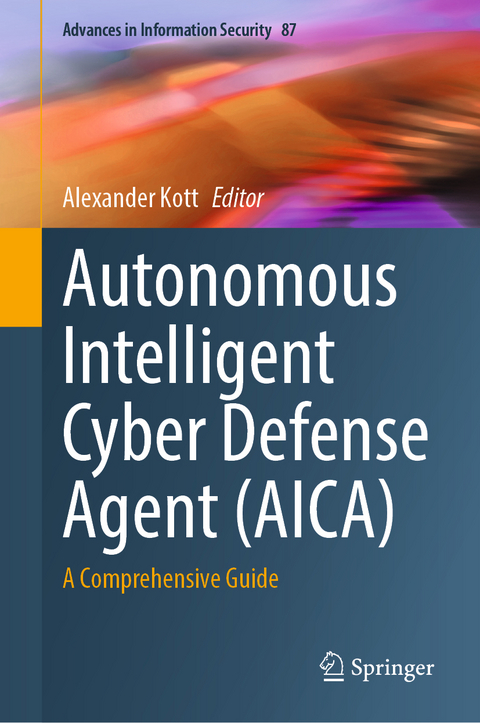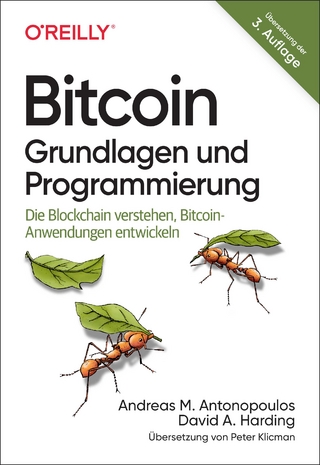
Autonomous Intelligent Cyber Defense Agent (AICA)
Springer International Publishing (Verlag)
978-3-031-29268-2 (ISBN)
This book offers a structured overview and a comprehensive guide to the emerging field of Autonomous Intelligent Cyber Defense Agents (AICA). The book discusses the current technical issues in autonomous cyber defense and offers information on practical design approaches. The material is presented in a way that is accessible to non-specialists, with tutorial information provided in the initial chapters and as needed throughout the book. The reader is provided with clear and comprehensive background and reference material for each aspect of AICA.
Today's cyber defense tools are mostly watchers. They are not active doers. They do little to plan and execute responses to attacks, and they don't plan and execute recovery activities. Response and recovery - core elements of cyber resilience - are left to human cyber analysts, incident responders and system administrators. This is about to change. The authors advocate this vision, provide detailed guide to how such a visioncan be realized in practice, and its current state of the art.
This book also covers key topics relevant to the field, including functional requirements and alternative architectures of AICA, how it perceives and understands threats and the overall situation, how it plans and executes response and recovery, how it survives threats, and how human operators deploy and control AICA. Additionally, this book covers issues of testing, risk, and policy pertinent to AICA, and provides a roadmap towards future R&D in this field.
This book targets researchers and advanced students in the field of cyber defense and resilience. Professionals working in this field as well as developers of practical products for cyber autonomy will also want to purchase this book.Dr. Alexander Kott serves as the Chief Scientist of the U.S. Combat Capabilities Development Command Army Research Laboratory. In this role he provides leadership in development of ARL technical strategy, maintaining technical quality of ARL research, and representing ARL to the external technical community. Dr. Kott is also the Army Senior Research Scientist (ST) for Cyber Resilience, in which capacity he formulates the vision of future technologies critical to the Army cyber resilience, and advocates and shapes plans and programs leading to such technologies. Prior to becoming the Chief Scientist of ARL, Dr. Kott was the Chief of the Network Science Division at ARL, leading a division focused on innovative basic and applied research, threat analysis, technology transition and security operations in computer, communications, information, and social networks; formulating and executing a broad range of internal and extramural research programs.Earlier, Dr. Kott served as a Program Manager at Defense Advanced Research Projects Agency (DARPA), where he was responsible for management of multiple, large-scale R&D projects. Kott’s earlier positions included Director of Research and Development at Carnegie Group, Pittsburgh, PA. There, his work focused on novel information technology approaches, such as Artificial Intelligence, to complex problems in engineering design, and planning and control in manufacturing, telecommunications and aviation industries.Dr. Kott earned his PhD in Mechanical Engineering from the University of Pittsburgh, Pittsburgh, PA, in 1989, where he researched AI approaches to invention of complex systems. He received the Secretary of Defense Exceptional Public Service Award, in October 2008. He published over 100 technical papers and served as the co-author and editor of twelve books.
Chapter. 1. Autonomous Intelligent Cyber-defense Agent: Introduction and Overview.- Chapter. 2. Alternative Architectural Approaches.- Chapter. 3. Perception of Environment.- Chapter. 4. Perception of Cyber Threats.- Chapter. 5. Situational Understanding and Diagnostics.- Chapter. 6. Learning about the Adversary.- Chapter. 7. Response Planning.- Chapter. 8. Recovery Planning.- Chapter. 9. Strategic Cyber Camouflage.- Chapter. 10. Adaptivity & Antifragility.- Chapter. 11. Negotiation and Collaboration.- Chapter. 12. Human Interactions.- Chapter. 13. Testing and Measurements.- Chapter. 14. Deployment and Operation.- Chapter. 15. Command in AICA-intensive Operations.- Chapter. 16. Risk Management.- Chapter. 17. Policy Issues.- Chapter. 18. Development Challenges.- Chapter. 19. Case Study A: A Prototype Autonomous Intelligent Cyber-defense Agent.- Chapter. 20. Case Study B: AI Agents for Tactical Edge.- Chapter. 21. Case Study C: the Sentinel Agents.
| Erscheinungsdatum | 04.06.2023 |
|---|---|
| Reihe/Serie | Advances in Information Security |
| Zusatzinfo | XXIX, 445 p. 117 illus., 48 illus. in color. |
| Verlagsort | Cham |
| Sprache | englisch |
| Maße | 155 x 235 mm |
| Gewicht | 830 g |
| Themenwelt | Informatik ► Netzwerke ► Sicherheit / Firewall |
| Informatik ► Theorie / Studium ► Künstliche Intelligenz / Robotik | |
| Schlagworte | Agent Architectures • AI in cyber-defense • Attack Surface • Automated Cyber Response and Recovery • Autonomous intelligent agents • Cyber analysis • Cyber-autonomy • Cyber defense • cyber security • cyber warfare • Human-Agent Teaming • Information Fusion • Intrusion Detection • Malware • Multi-agent Systems • Network Monitoring • Risk and vulnerability |
| ISBN-10 | 3-031-29268-5 / 3031292685 |
| ISBN-13 | 978-3-031-29268-2 / 9783031292682 |
| Zustand | Neuware |
| Informationen gemäß Produktsicherheitsverordnung (GPSR) | |
| Haben Sie eine Frage zum Produkt? |
aus dem Bereich


